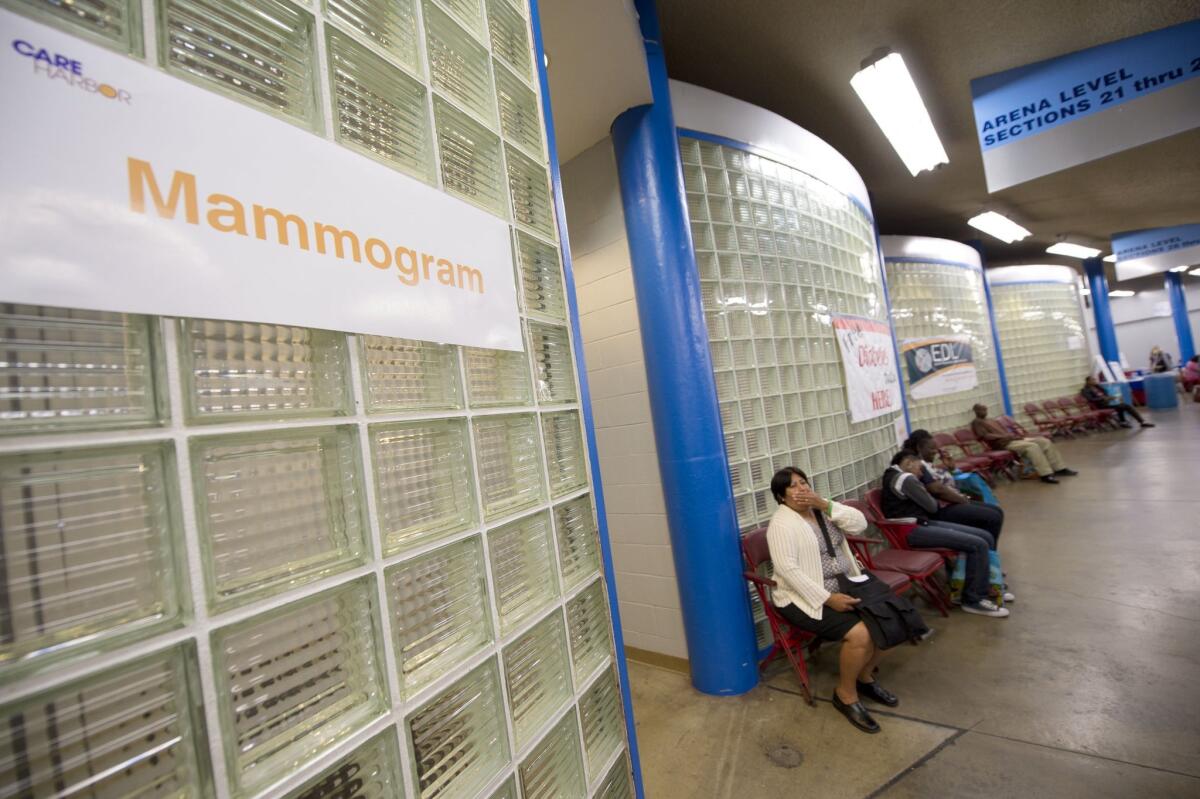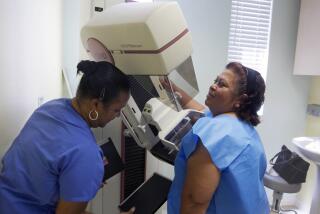Editorial: More isn’t better when it comes to mammograms

A woman waits outside the mammogram and women’s health services area at a free health clinic event at the Los Angeles Sports Arena in 2012.
The backlash was fierce six years ago when an expert federal panel said women were starting mammograms too young and getting them too often. Even though the U.S. Preventive Services Task Force based its recommendations on solid research that found annual mammograms starting at age 40 were not the lifesavers they had been made out to be, there were cries that this was the start of death panels that would deny women coverage for vital health screenings because of the cost. The American Cancer Society was among those attacking the panel, saying it would continue to call for the breast-cancer screenings for women 40 and older.
But this week, the society moved its own recommendations much closer to those of the task force. Women can wait until age 45 to begin mammograms without risking their health, the cancer-fighting organization said, and women older than 55 would be fine having the test done in alternate years rather than annually. The new recommendations will help alleviate the suspicion that any time the government suggests a less aggressive and less expensive medical route, it could only be doing so to save money, not help protect Americans’ health.
In fact, the task force’s bold proclamation in 2009 helped bring about a more questioning era in which it became more acceptable to challenge some of the screening and treatment that was once considered a bedrock of modern medicine. When the panel declared in 2012 that the PSA test for prostate cancer did substantially more harm than good, the blowback was more muted. Less than a year later, the American Urological Assn. came close to echoing that view, saying that men without risk factors could safely go through life without a PSA test.
It’s not easy for the public — or for doctors following long-established practices — to get past the belief that the more high-tech testing and aggressive treatment we can throw at a problem, the better. Testing can save lives, but it also comes with risks — unnecessary tissue removal or, in the case of prostate cancers that could have been watched instead of irradiated or removed, serious side effects from treatment such as urinary, bowel and erectile dysfunction. The treat-no-matter-what approach may prevail even through the end stage of terminal diseases. A large study in 2013 found that terminally ill patients were frequently subjected to torturous last-ditch medical treatments during their final month of life, even when doctors knew there was no real hope.
The idea isn’t to rob people of medical choices but rather for doctors to engage their patients in thoughtful conversations about tests and treatment. There are times when more isn’t better; more doctors and patients are beginning to recognize that, thanks to the work of groups such as the Preventive Services Task Force.
Follow the Opinion section on Twitter @latimesopinion and Facebook
More to Read
A cure for the common opinion
Get thought-provoking perspectives with our weekly newsletter.
You may occasionally receive promotional content from the Los Angeles Times.










